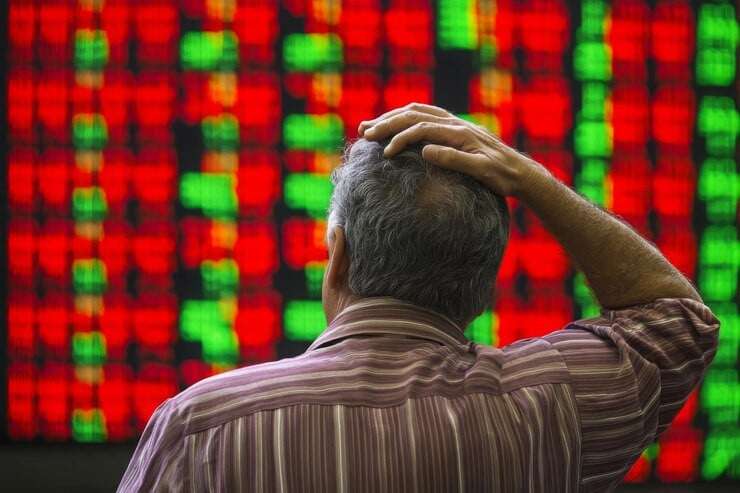Market Swings Before Closing 0.5% Down
KARACHI: The Pakistan Stock Exchange (PSX) witnessed a turbulent trading week, with the KSE-100 index fluctuating before settling at 117,807 points, reflecting a decline of 635 points or 0.5% on a week-on-week (WoW) basis.
Investor sentiment wavered early in the week, driven by apprehensions over increased royalty payments for cement firms and the International Monetary Fund’s (IMF) reservations on proposed tariff reductions. However, optimism resurfaced following Pakistan’s staff-level agreement with the IMF under the Extended Fund Facility (EFF), paving the way for a $1 billion tranche release.
Adding to market confidence, the IMF also approved a 28-month $1.3 billion Resilience and Sustainability Facility (RSF), further strengthening the country’s economic outlook.
Market Performance: Sharp Drop Followed by Recovery
At the start of the week, the PSX experienced a sharp decline as the KSE-100 index plunged 2,003 points on Monday, triggered by institutional profit-taking following previous record highs.
Tuesday brought slight relief as the index rebounded by 196 points, with investors betting on a resolution to the power sector’s circular debt crisis. The recovery gained momentum on Wednesday, with the index surging 1,139 points, driven by the IMF staff-level agreement.
However, Thursday’s session—the final trading day of the week—was relatively subdued. The market closed nearly flat, recording a minor increase of 34 points, leaving the KSE-100 at 117,807.
Mixed Trends and Sector-Wise Performance
According to Arif Habib Limited (AHL), the market followed a mixed trajectory throughout the week. The initial slump resulted from concerns over increased cement sector royalties and IMF’s scrutiny of tariff proposals. However, renewed optimism following the IMF deal fueled a late-week recovery.
On the economic front, Pakistan’s GDP expanded by 1.73% year-on-year in the second quarter of FY25, while the first half of FY25 saw a 1.54% growth rate, down from 2.33% in the corresponding period last year. Meanwhile, in the latest treasury bill auction, the State Bank of Pakistan (SBP) raised Rs640 billion, slightly below its Rs650 billion target.
Sector-wise, negative pressures stemmed from fertilisers (-333 points), technology (-280 points), cement (-196 points), leather & tanneries (-107 points), and textiles (-54 points). On the other hand, positive contributions came from banking (+488 points), pharmaceuticals (+76 points), exploration & production (+72 points), and tobacco (+41 points).
Stock-Specific Movements
Among individual stocks, major laggards included Fauji Fertiliser Company (-239 points), Systems Limited (-198 points), Service Industries (-107 points), Engro Fertilisers (-106 points), and Cherat Cement (-106 points). On the positive side, United Bank Limited (UBL) led with a 462-point gain, followed by Hubco (+169 points), OGDC (+115 points), Meezan Bank (+112 points), and Pakistan Tobacco (+41 points).
Foreign Investment and Trading Volume
Foreign investors remained net buyers, purchasing $3.92 million worth of stocks compared to net outflows of $7.96 million in the previous week. The oil marketing sector saw the highest foreign inflows at $4.2 million.
Average daily trading volume stood at 317 million shares, marking a 38% WoW increase, while the average daily traded value climbed 27% to $87 million.
Key Developments of the Week
- Mari Energies commenced production from the Shewa discovery in Waziristan.
- Direct tax collection for the first half of FY25 surged 29%.
- Pakistan Petroleum and OGDC reported a new gas discovery in Sindh’s Kirthar block.
- Punjab CM launched a free tractor scheme to support farmers.
- SBP raised Rs981 billion through floating-rate Pakistan Investment Bonds.
Market Outlook for March
According to Topline Securities, the KSE-100 index recorded a 4% month-on-month (MoM) gain, driven by multiple factors, including the IMF agreement, indications of progress in resolving circular debt, and expectations of government measures to reduce electricity prices.
FAQs
1. Why did the PSX experience volatility this week?
The market fluctuated due to concerns over cement royalties, IMF policies, and profit-taking but rebounded following the IMF staff-level agreement.
2. What sectors contributed negatively to the market?
Fertiliser, technology, cement, leather, and textile sectors weighed down the index.
3. How did foreign investors react to market movements?
Foreign investors were net buyers, with oil marketing companies attracting the highest inflows.
4. What were the key economic indicators this week?
Pakistan’s GDP growth slowed to 1.73% in Q2 FY25, while direct tax collection rose 29%.
5. What is the outlook for the PSX in the coming weeks?
Analysts expect continued growth, supported by the IMF agreement, progress on circular debt resolution, and potential government interventions in energy pricing.



